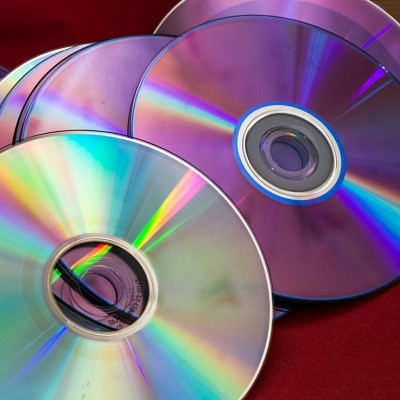
2021-08-02
Visited : 1235
Using a focused laser beam, scientists can manipulate properties of nanomaterials, thus ‘writing’ information onto monolayer materials. By this means, the thinnest light disk at atomic level was demonstrated.
The bottleneck in atomic-scale data storage area may be broken by a simple technique, thanks to recent innovative studies conducted by scientists from Nanjing Normal University (NJNU) and Southeast University (SEU).
Through a simple, efficient and low-cost technique involving the focused laser beam and ozone treatment, the NJNU and SEU research teams, leading by Prof. Hongwei Liu, Prof. Junpeng Lu and Prof. Zhenhua Ni demonstrated that the photoluminescence (PL) emission of WS2 monolayers can be controlled and modified, and consequently, it works as the thinnest light disk with rewritable data storage and encryption capability.
“In our childhood, most of us are likely to have experience of focusing sunlight onto a piece of paper by magnifying glass and trying to ignite the paper. The scorched spot on paper is a sort of data recording at the moment. Instead of focusing sunlight, we focus laser beam on modified atomic level materials and study effects of the focused laser beam on PL emissions of the materials,” said Prof. Lu.
Data storage and encryption: information ‘drawn’ on ozone treated WS2 films
Owing to its advantage of direct visibility, PL is usually considered as an ideal technology in terms of encryption and decryption data storage. For a straightforward and effective encryption data storage method, the following aspects are desired: (i) direct writing (fast writing-in speed); (ii) high security level; (iii) large data storage capacity; (iv) visual decryption reading; (v) erasing capability.
To address these technological challenges, researchers demonstrate the thinnest light disk with encryption functionality.
The write-through and erasable encryption are realized on WS2 monolayers. The writing-in and reading-out of information are enabled by the directly controlling of fluorescence contrast of WS2 monolayers. Ozone and focused laser beam scanning are employed to on-demand manipulate PL emission and realize encryption.
With this simple and low cost approach, the scientists were able to use the focused laser beam to selectively ‘write’ information onto any region of the film to storage encrypted data. In addition, the written data are erasable, making the monolayer light disk reusable.
Interestingly, the evolution of PL emission with different writing laser powers could be used to assign different gray levels. The 16 gray levels assignment indicates a typical triangle WS2 monolayer with the side length of 60 μm can storage ~1 KB data. Owing the high spatial resolution and power sensitivity, the storage capacity within 1 nm thickness could be up to ~62.5 MB/cm2 and the writing speed can reach ~6.25 MB/s. This technology will be beneficial to extend the optical encryption into low dimensional regime, offering an unexpected information-secure solution to exchange data.
This innovation was first published online in the journal Advanced Functional Materials on 24 June 2021.
The fast-growing information field demands higher security and larger storage capability. To develop light disk that cater to the industry standard, The research teams from NJNU and SEU will extend the versatile focused laser beam technique to wafer-scale monolayer material. In addition, they will look into further improving the storge capability of light disk via normal direction stacking.
Read the original article on Uncover Reality.